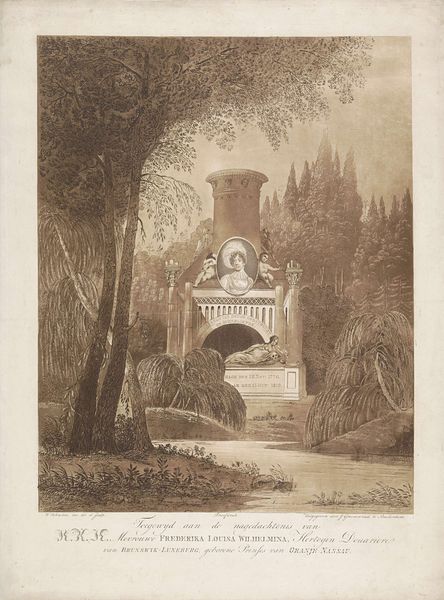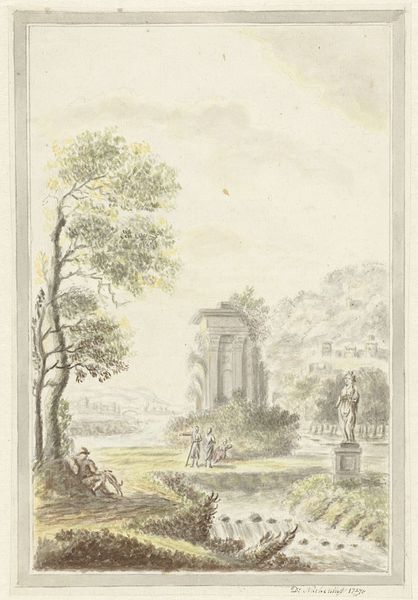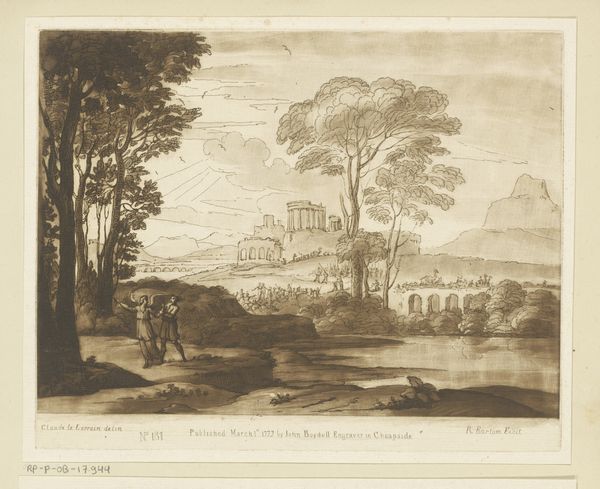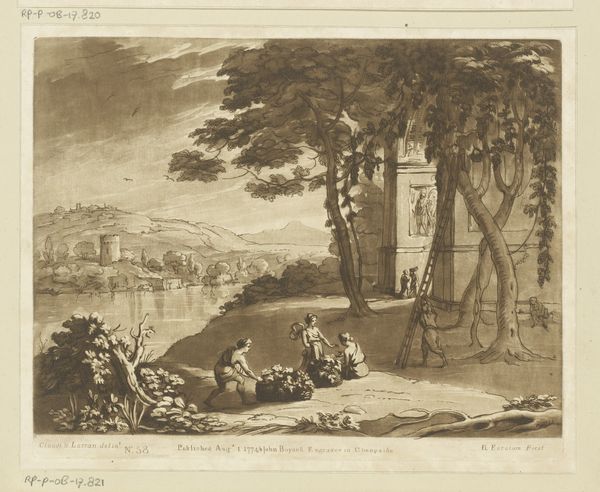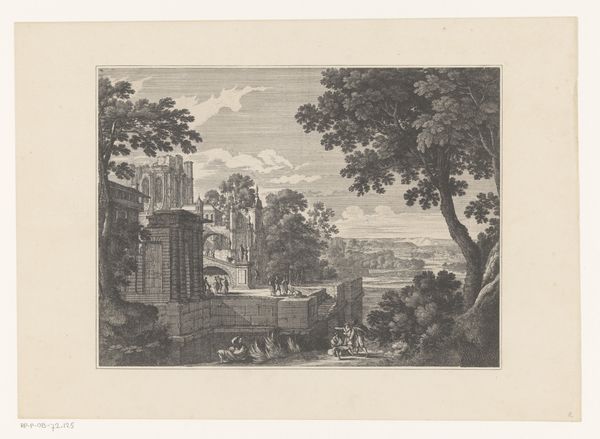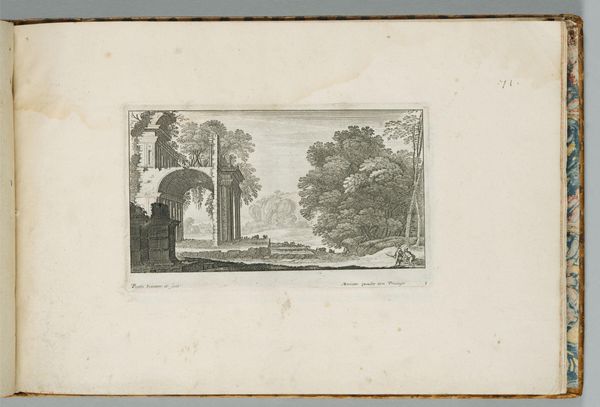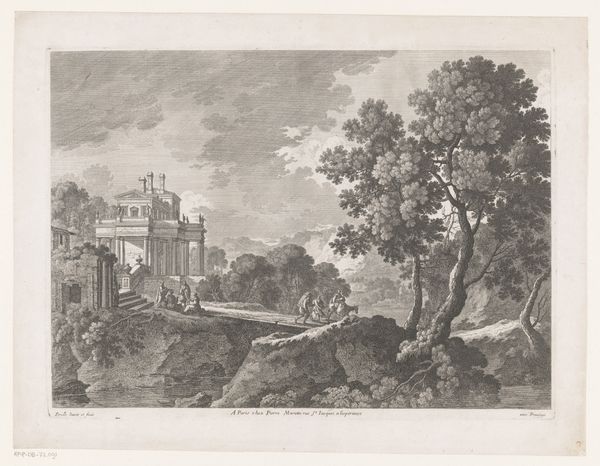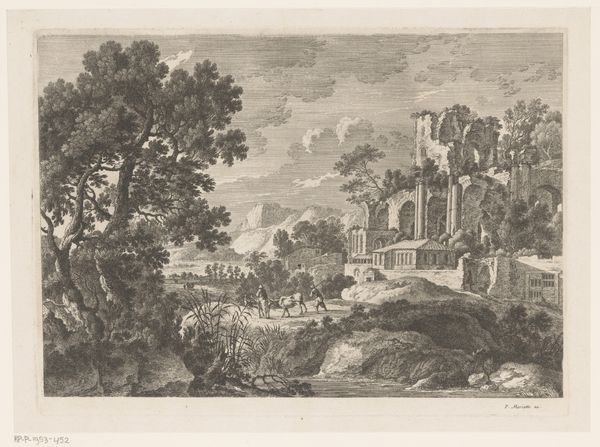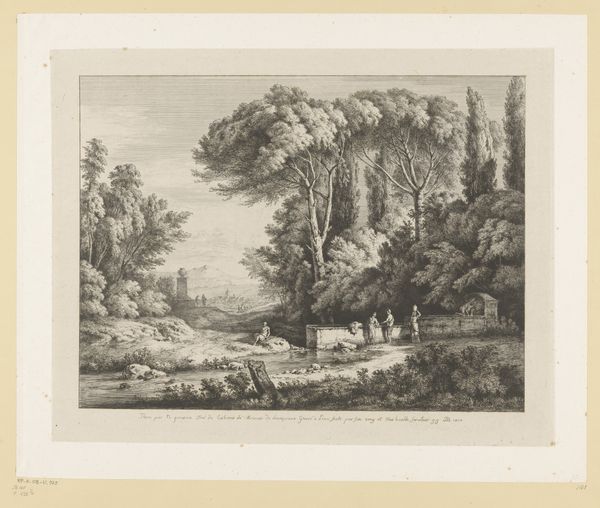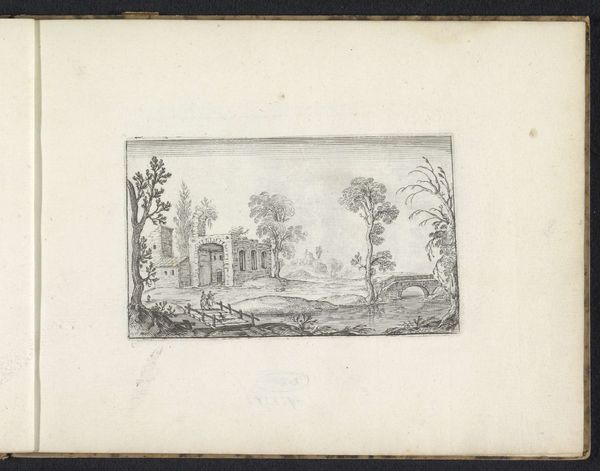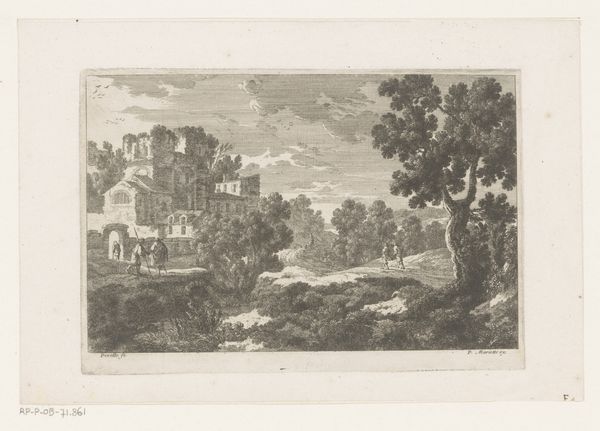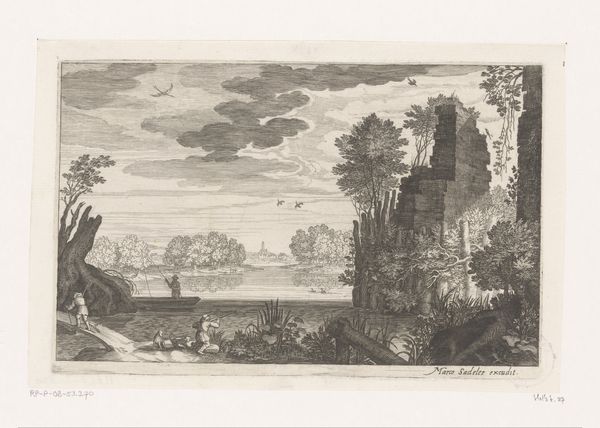
drawing, watercolor
#
portrait
#
drawing
#
neoclacissism
#
landscape
#
oil painting
#
watercolor
#
coloured pencil
#
watercolour illustration
#
history-painting
#
watercolor
Dimensions: height 574 mm, width 430 mm
Copyright: Rijks Museum: Open Domain
Curator: This piece, "Allegorical Monument for Louise, Princess of Orange-Nassau," likely completed between 1819 and 1821, is attributed to W. Johnston, rendered in watercolour. Editor: It feels strangely serene. There’s a muted quality to the colours, even for watercolour, that creates a sense of gentle melancholy. A draped figure rests under this classical structure. Curator: Exactly. The artwork uses neoclassicism's visual language, situating loss within a framework of established aesthetics and reason. Louise was part of a powerful family deeply involved in European politics. Monumental imagery has been part of dynastic expressions for millennia, expressing continuity across time, connecting Louise's life to a visual language that signified power. The family sought to use the death of their daughter, sister, and wife, as a tool to increase dynastic power, or as we say now, 'improve their PR'. Editor: That's what is so interesting, isn’t it? Death as spectacle, loss rendered into symbolic power. This archway that shelters the tomb bears a strong resemblance to funerary architecture of antiquity, but it’s juxtaposed against quite a naturalistic, almost romantic backdrop with lush shrubbery, an asymmetry to its design that counters the typical formalism of such monuments. Curator: Think about what the chosen symbolic imagery communicates here: The portrait bust of Louise in the lunette acts as an ideal, representing what she stood for as Princess, wife, and daughter of power. Editor: So even in mourning, identity is constructed and carefully displayed. Is it about remembering the individual or perpetuating a specific narrative about royalty? I wonder who the intended audience was supposed to be, seeing it as an artwork, separate from the person that is dead. Is that the moment in history, when public figures became like brands? Curator: That's the central question here, I think, isn’t it? We look at a landscape where both public mourning and artistic symbolism work in concert, each amplifying the messages embedded within the other. This goes so much further than pure mourning into active management of royal branding. Editor: Absolutely. There’s an almost theatrical quality to it, a performance of grief orchestrated for a specific purpose. These symbols are speaking to us now, across centuries, revealing so much about the power dynamics and social narratives of the time.
Comments
No comments
Be the first to comment and join the conversation on the ultimate creative platform.
